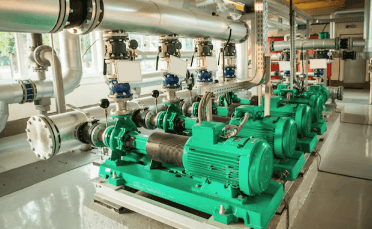Question
a.
Viscous forces
b.
Turbulent forces
c.
Pressure forces
d.
Compressibility forces
Posted under Basic Chemical Engineering
Interact with the Community - Share Your Thoughts
Uncertain About the Answer? Seek Clarification Here.
Understand the Explanation? Include it Here.
Q. Which of the fluid forces are not considered in the Reynold's equation of flow ?
Similar Questions
Explore Relevant Multiple Choice Questions (MCQs)
Q. For ideally incompressible fluid, the Mach number will be
View solution
Q. In case of isentropic flow, the speed of sound in an ideal gas is proportional to (where M = molecular weight of the gas)
View solution
Q. Boundary layer separation is caused by the
View solution
Q. With increase in temperature, the vapor pressure of liquids
View solution
Q. A mercury (specific gravity = 13.6) manometer connected across an orificemeter fitted in a pipe shows a manometer reading of 2 cms. If the manometer liquid is changed to carbon tetrachloride (specific gravity = 1.6), then for the same flow rate of water the new manometer reading will be __________ cms.
View solution
Q. Remote control valve is a __________ valve.
View solution
Q. Which of the following quantities are computed by using the hydraulic radius for non-circular ducts ?
View solution
Q. Centre of pressure in an immersed body is __________ the centre of gravity.
View solution
Q. The centre of pressure is
View solution
Q. The uniformity of a gas fluidised bed depends upon the __________ of the solid particles.
View solution
Q. A differential pressure cell is used for
View solution
Q. If more than two branches of pipes are to be connected at the same point, then use a/an
View solution
Q. In case of a centrifugal pump, the ratio of total delivered pressure to pressure developed with the impeller is called the __________ efficiency.
View solution
Q. Pick out the wrong statement.
View solution
Q. Mass velocity is independent of temperature & pressure, when the flow is
View solution
Q. Very small pressure difference (< 5 mm water coloumn) can be most conveniently measured by a/an __________ manometer.
View solution
Q. For pipe flows, head is proportional to __________ at constant capacity(where, D = pipe diameter).
View solution
Q. For a given Reynold number as d/D for an orifice increases, Cd will (where, d & D are orifice & pipe diameters respectively).
View solution
Q. The ratio of wall drag to total drag in the Stoke's law range is
View solution
Q. Rotary vacuum pumps can reduce the absolute pressure to as low as __________ mm Hg.
View solution
Recommended Subjects
Are you eager to expand your knowledge beyond Basic Chemical Engineering? We've handpicked a range of related categories that you might find intriguing.
Click on the categories below to discover a wealth of MCQs and enrich your understanding of various subjects. Happy exploring!








